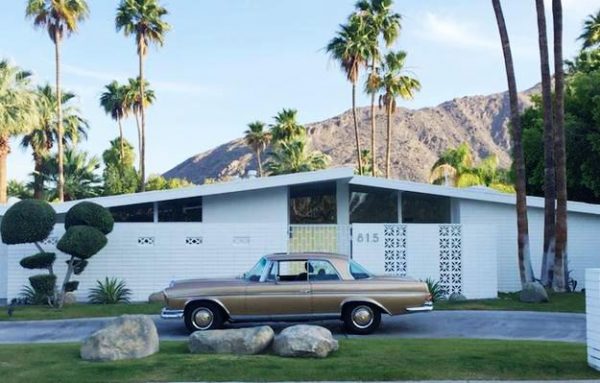
Lately I’ve been browsing several of the online forums available for mid-century enthusiasts. Among the stunning photos of mid-century architecture around the world, included are photos of remodels of various mid-century homes. For those enthusiasts that embrace this architectural design period, certain updates and design choices are considered to be ghastly and unsightly mistakes. While I have certainly seen some remodels that have left a mid-century home’s interior unrecognizable to the era, as well as some eyebrow raising updates, I’ve pondered whether the idea of keeping your mid-century home completely unaltered is unreasonable. After all, these homes are at least 50 years old and by now they should be needing some updates. The way people live in their homes today is a bit different than how they lived 50 years ago. My own 1950’s home with my meager bedroom closet space is a testament to this fact! And after all, shouldn’t homeowners feel free to update their homes in any way that they wish?
Conversely, if you own a mid-century home in today’s housing market, when historic architecture is being torn down for the latest McMansion build, isn’t it your duty to preserve a piece of historic Americana? Homes that were built during the mid-century are now becoming eligible for the historic registry. It’s widely considered to be an honor in keeping the integrity intact for homes built during this time period. Therefore, as a steward to historic preservation, it is your responsibility to keep the original elements of your home alive. This was a rich period of post World War architectural advancement, where European influences in design were resulting in home designs never before seen that included the innovative use of building materials, large clerestory windows, indoor/outdoor living, post and beam ceilings, and open floor plans. To those that support the notion of Purism, keeping a mid-century space intact and only going forth with updates that preserve the original intention of the home is of the utmost importance.

This is a topic that lends itself to animated discussion and even contention among mid-century enthusiasts and homeowners. Do you consider yourself a Purist? Or do you tend to embrace an eclectic mix of styles in your mid-century space? Do you feel strongly that a mid-century home should keep to it’s original lines and materials? Or, perhaps you feel that you don’t want to live in a time capsule, and you rightfully want to put your own stamp and personality on your home. Purists’ goals deem to restore their homes, rather than remodel. And those that remodel rather than restore can definitely face harsh criticism.
Whether you are a Mid-century Purist or not, there are elements of a mid-century home that should absolutely be embraced and retained, because these elements are what are unique and special about the homes that were built during this era. If you are one who cannot commit to a Purist approach, try adhering to some of the following ideas with your updates to make sure your home does not lose its mid-century charm.
Natural Materials: The use of natural materials is a must if you want to keep the integrity of a Mid-century home intact. Mid-century homes were built to bring the outdoors in, and embracing these natural materials helps blur the lines between indoors and out. So go ahead and feel free to replace that worn shag carpeting with updated modern flooring choices. Think of using materials such as concrete, stone, slate, wood, cork, or bamboo. Are your mid-century counters needing a refresh? There are many amazing modern options out there right now. You can find beautiful Formica patterns, even a line by designer Jonathan Adler. Also consider quartz and concrete for a modern, clean, and streamlined look. Modern cabinetry options are far and wide. Look for brightly colored door fronts, bamboo, or walnut options for the mid-century feel with a modern twist.

Original Elements: Retaining key mid-century house elements such as an open floor plan, and large windows that bear an abundance of natural light or any unique features your home may have will help your home retain its character, even when updating materials such a cabinetry and countertop surfaces.
Color Scheme: Not into the mid-century color scheme for an entire room? Try a neutral background but adding pops of bright orange, turquoise, or lime green, which were popular accents in the mid-century era.
Mid-Century Furniture: Does having an entire roomful of mid-century pieces sound like living in a museum? Try just displaying one or two key statement pieces, such as a sleek lined teak credenza or an Eames chair. These pieces are considered timeless instead of dated. And who knows, you may develop a passion for these pieces once you start acquiring them!
Are you a Purist or a Non-Purist? We would love to hear your perspective!
